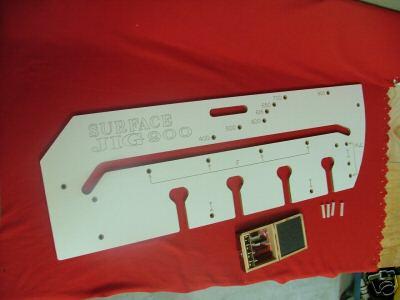- Joined
- 28 Oct 2005
- Messages
- 31,282
- Reaction score
- 1,998
- Country

I've got a worktop jig but have never needed to cut an angle that wasn't pretty close to 90 degrees.
With a standard jig, how do I adjust the cut to make,say, an 85 degree angle or a 95 degree angle?
Am I right in guessing you'd cut the male section, sit it on the carcasses scribe around it with the other board in situ - but how do you adjust the angle? I guess you must clamp the jig slightly off-line but anytips?
With a standard jig, how do I adjust the cut to make,say, an 85 degree angle or a 95 degree angle?
Am I right in guessing you'd cut the male section, sit it on the carcasses scribe around it with the other board in situ - but how do you adjust the angle? I guess you must clamp the jig slightly off-line but anytips?

